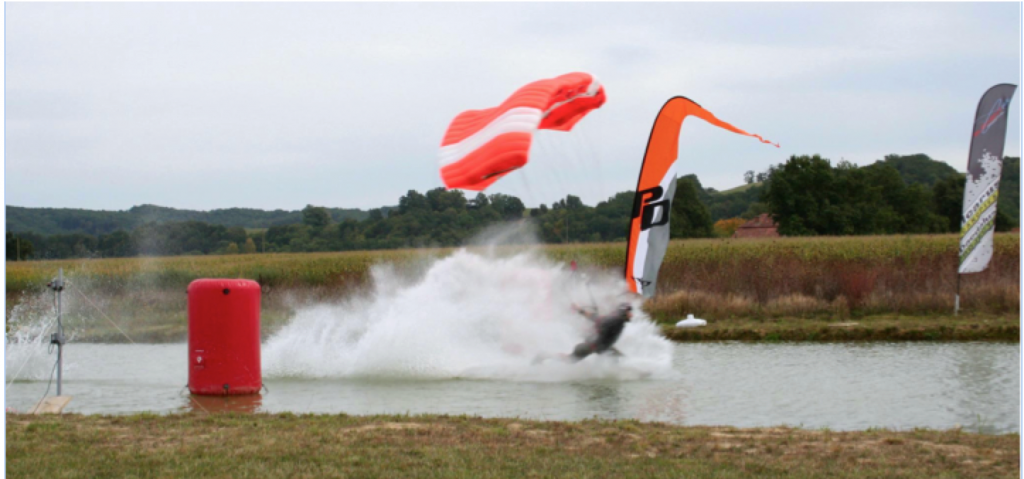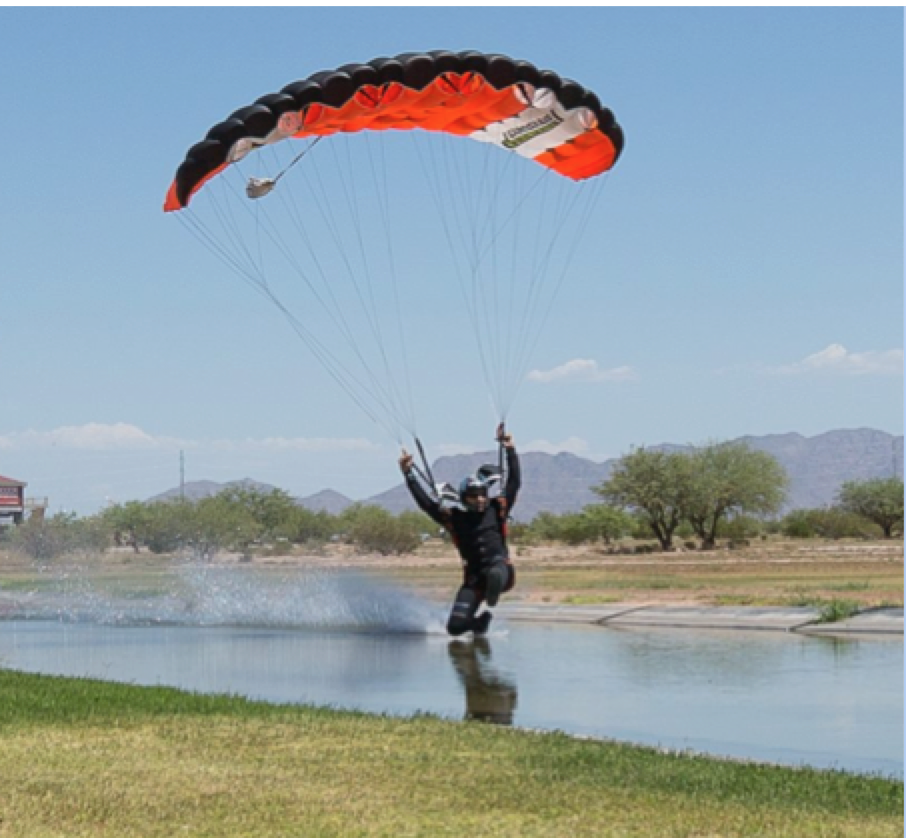Canopy piloting – Analyse personnelle sur la progression sous voile, par Greg Crozier

Récemment, des accidents graves ont poussé la F.F.P à mettre en place des restrictions sur l’utilisation des voiles hautes performances utilisées pour le Canopy Piloting. Cette discipline du parachutisme sportif implique de connaître et maitriser parfaitement ce matériel pour qu’elle implique le moment le plus critique d’un saut un parachute, c’est à dire le posé !
Ces voiles ne sont pas dangereuses mais puisque leur plage de vitesse de vol est beaucoup plus élevée, elles doivent être réservées à un profil spécifique de parachutistes . J’approuve le commentaire de Dedric HOURDE, ancien compétiteur et représentant de Performance Designs : ‘‘Une voile est un outil. Un outil n’est pas nécessairement dangereux en soi : c’est plutôt la mauvaise utilisation que l’on en fait, et le manque de compétence/expérience. »
En 2012 et 2013, j’ai participé au Championnat de France de Canopy Piloting « Swoop »
Avec 45 sauts d’entrainement à cette discipline sur 2 ans, plus les 18 sauts de compétition, mes meilleures performances en JVX75 chargée à 2.55 (qui avec le recul était trop pour cette voile):
Précision: 77
Vitesse: 2’8 secondes (4ème place)
Distance: 94 mètres
En 2014, début d’une nouvelle ère pour les parachutistes du monde entier.
En 2012, les premières voiles ultra performantes apparaissent : La Petra et la Peregrine. Puis, ces 2 principaux constructeurs ont créé la Leia et la Valkyrie. Ce sont là, les versions adaptées aux parachutistes évoluant en chute libre sur des sauts conventionnels avant d’ouvrir leur voile.
En 2014, Il est donc enfin possible d’acheter ces voiles de Classe 6 même si on n’est pas compétiteur en Canopy Piloting. C’est un privilège d’avoir sur le marché un matériel aussi pointu et c’est une nouvelle page qui se tourne pour notre sport. La forme de ces voiles est complètement différente des 5 autres classes de voile, tout comme leurs réactions.
Pour les curieux, voici les différences entre la leia et la Valkyrie, par rapport aux modèles créés en premier lieu exclusivement pour la compétition:
- Le tissu tout d’abord. Sur l’intrados et l’extrados il est identique à toutes les voiles que vous connaissez et utilisez déjà. C’est primordial pour qu’on puisse les laisser pliées plusieurs jours. Hé oui, le tissu des Petra et des Peregrine est en ‘‘Full Sail’’, donc très épais. Il offre une portance hallucinante mais est très difficile à plier et ne doit pas rester en POD plusieurs jours.
- Les ouvertures. En plus du tissu moins contraignant à gérer, il était important de proposer une séquence d’ouverture moins exigeante. Les constructeurs ont donc réalisé ces voiles avec 7 caissons au lieu de 9 caissons avec un profil plus épais. La vitesse sur trajectoire est légèrement moins importante mais les deux paramètres suivant en sont largement améliorés:
- Ouverture plus facilement garantie « axée » puisque la voile est moins réactive aux mini asymétries de sortie de Pod/mise à l’air et du parachutiste. Le comportement de la voile est également plus permissif pour toutes les interventions de pilotage, de la phase d’ouverture au posé.
- Ouverture en vitesse terminale sans problème. Même si elles possibles avec la Petra et la Peregrine, elle clairement fortement déconseillées par les constructeurs. Tout comme les voiles de parapente, ces voiles là sont conçues pour un vol haute performance en priorité et non pour encaisser les chocs de mise à l’air en vitesse terminale.
- Les posés. Même si tout le monde en veut toujours plus, se poser constamment avec une Petra ou une Valkyrie ailleurs que sur une zone dédiée : Pond + bac, ou herbe fine, serait une erreur. Si vous sautez tous les jours au dessus d’un désert, c’est possible. Si ce n’est pas le cas, c’est une prise de risques un peu trop grande selon moi.
J’espère que cet article et ma mini-expérience vous serviront.
